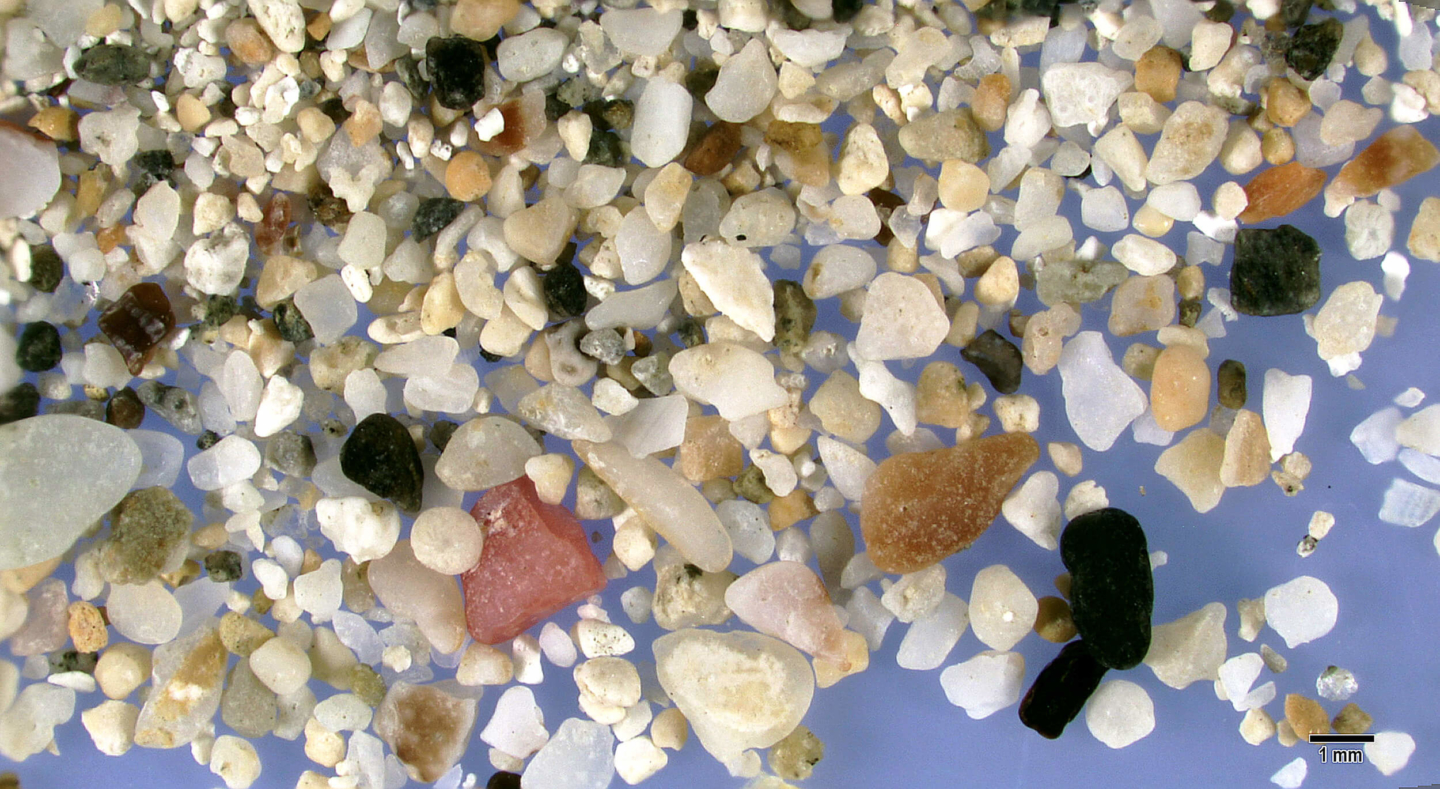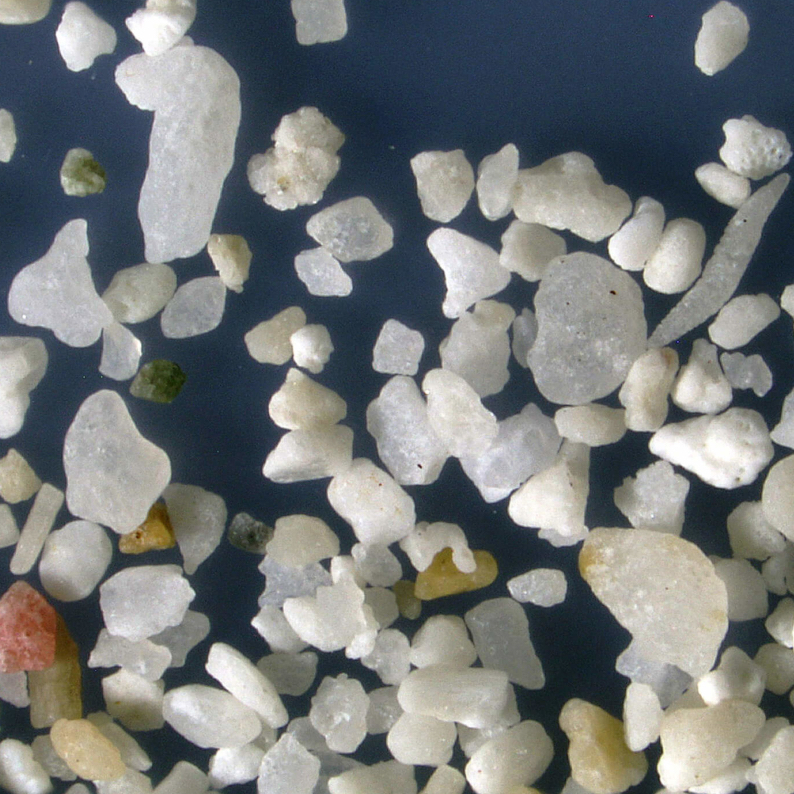
Only 9 miles long and 2 miles wide, St. John boasts of lush emerald mountains, hills and valleys without many flat areas, and soft white coral sands on numerous near-deserted tranquil beaches. The coast has coral reefs full of sea life with coastal areas characterized by many protected bays. Approximately 60% of the island is the protected Virgin Islands National Park, administered by the United States National Park Service.

The majority of the smaller white and tan sand grains are biogenic. Their smooth contours indicate long wear from wave action. Immediately to the left of the large dark pink triangular sand grain near the bottom is a round foraminifera (foram) whose chambers are just barely visible. The dark grains are most likely pieces of mineral of volcanic origin.
Geographic Overview
Although St. John is a volcanic island and part of a submarine mountain range extending from Cuba to Trinidad, sand on recreational beaches is primarily biogenic. Occasional black sand grains of volcanic origin are intermixed with a variety of white, tan, and reddish-brown grains of mollusks, white calcium carbonate skeletal remains of bleached coralline algae and other shell fragments.
Sand Gallery

The majority of the smaller white and tan sand grains are biogenic. Their smooth contours indicate long wear from wave action. Immediately to the left of the large dark pink triangular sand grain near the bottom is a round foraminifera (foram) whose chambers are just barely visible. The dark grains are most likely pieces of mineral of volcanic origin.

In this higher magnification a large off-white foram is present to the right of center. A white round foram with barely visible segmental chambers is present near the top center of this view. A dark greenish-black grain at the lower left and other black grains are likely volcanic mineral fragments.
Among the larger sand grains are light tan and brown mollusk shell fragments. The black grain with thin vertical white stripes just below center is also a mollusk shell fragment while the smaller black grains are probably of volcanic origin. The remaining white and tan sand grains as well as translucent grains are fragments of bivalves, calcareous coralline algae and other biogenic organisms.



















